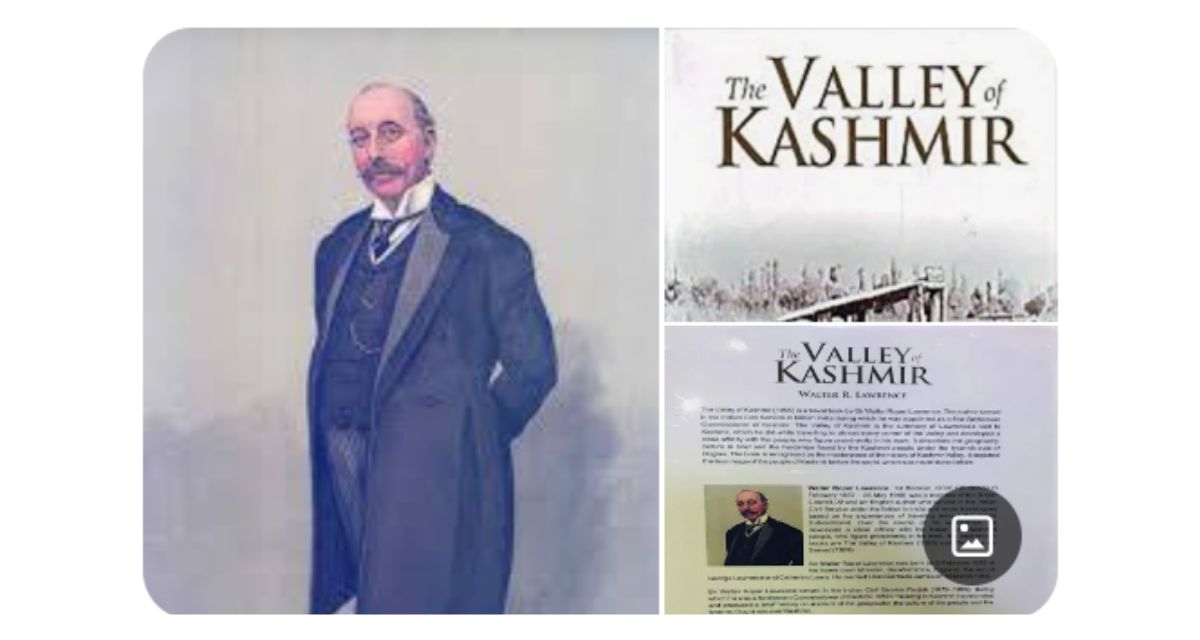In 1895, a British officer named Walter R. Lawrence travelled across the valleys, rivers, and villages of Kashmir — not as a conqueror, but as an observer. His book, The Valley of Kashmir, remains one of the most detailed portraits ever written about the land and its people. Behind its poetic descriptions lie numbers — cold, revealing, and heartbreaking. They speak of a paradise where beauty lived alongside poverty, where shawl weavers starved, and where faith and resilience endured every storm. Here, we revisit those forgotten figures — to remember what Kashmir once was, and what it overcame.
Kashmir by Numbers, 1895 — From the Valley of Walter Lawrence
These remarkable statistics from Walter R. Lawrence’s 1895 classic The Valley of Kashmir offer a rare window into the Valley’s social and economic life in the late 19th century — a land of beauty and hardship.
📊 Population & Demographics
| Metric | Statistic |
|---|
| Total Population (1891) | 814,241 (86% Muslim, 7% Hindu, 1% Sikh) |
| Srinagar City Population | 118,960 |
| No. of Villages | 2,830 |
| Population Density | ≈ 500 per sq. mile |
“The Valley is more thickly peopled than many European provinces.”
🌾 Agriculture & Land Use
| Metric | Statistic |
|---|
| Total Area of the Valley | 1,750 sq. miles |
| Land Under Cultivation | 5% (≈87.5 sq. miles) |
| Rice (Paddy) Fields | 70% of cultivated land |
| Average Rice Yield | 20 maunds (~800 kg) per acre |
| Land Tax | 25–33% of produce |
“A system of oppression, ruinous to agriculture.”
💰 Taxation & Economy
| Metric | Statistic |
|---|
| Peasant Annual Income | ₹18–22 per year |
| Average Daily Wage | 3 annas (₹0.18) |
| Annual Revenue Collected | ₹22 lakhs |
| Interest Charged by Moneylenders | 25–50% |
| Tax on Shawl Looms | ₹2 per month |
“The Kashmiri cultivator’s cash earnings are less than the wages of one day’s labour in the Punjab.”
🧶 Industry & Trade
| Metric | Statistic |
|---|
| Shawl Looms (1870 → 1891) | 24,000 → 5,000 |
| Carpet Looms | 3,200 |
| Silk Export (1893) | 4,000 lbs |
| Merchant Boats on Jhelum & Dal | 2,000+ |
| Shawl Export Value (Peak) | ₹50 lakh → ₹5 lakh |
“A ruin as complete as Pompeii, only the bodies still breathe.”
🩺 Health & Society
| Metric | Statistic |
|---|
| Life Expectancy | 28–32 years |
| Famine Deaths (1877–79) | ~250,000 (one-third of population) |
| Infant Mortality | 1 in 3 children |
| Pandit Literacy | ~90% |
| Muslim Literacy | <1% |
“The graveyards of the famine years are the only places where grass still grows.”
🕌 Religion & Culture
| Metric | Statistic |
|---|
| Total Shrines Recorded | 777 (540 Muslim, 160 Hindu, 77 Buddhist) |
| Mosques in Srinagar | 348 |
| Temples Across the Valley | 162 |
| Average Household Size | 5.4 persons |
| Wedding Cost (Poor Family) | ₹25–30 |
“The Kashmiri religion is mystical and tolerant, coloured by the valley’s old faiths.”
📚 Source
All figures are drawn from Walter R. Lawrence’s “The Valley of Kashmir” (1895). Compiled and formatted by Gyawun for educational and historical reference.

